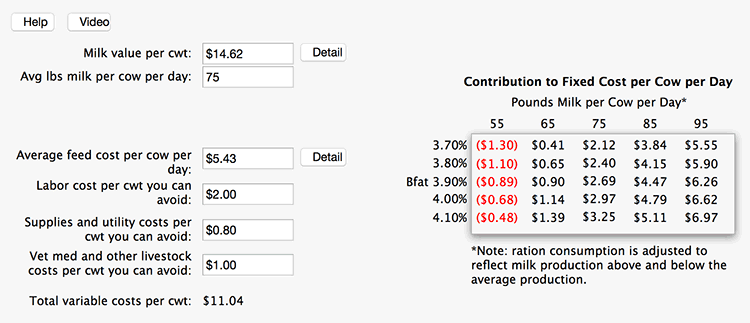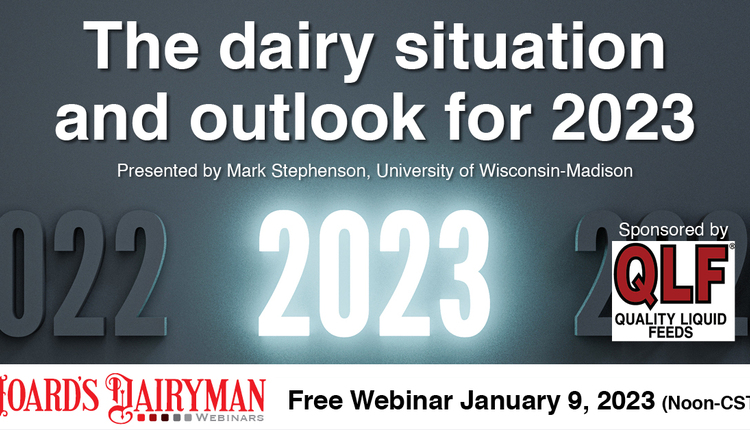
Ordinarily we think that culling cows falls into two categories — involuntary and voluntary.
However, I think that we should partition voluntary culling into another two groups:
- One category could capture our ordinary voluntary culls that occur when we have a bottleneck in our fixed assets, like the barn or parlor, and we have more heifers entering the herd than we can accommodate.
- The second category would be culled when milk prices are quite low relative to the costs of production and some cows may not be covering their variable costs. Under these conditions, we would lose less money in the bottom of the cycle if we culled those cows even if our facilities could handle them.
In 2009, we saw that happen and many farms culled cows to the point of operating under capacity. We may be at that point again. However, it may be hard to know which cows might be candidates for economic culling. The figure shows a decision tool that is on the DairyMarkets.org web page. It contains fairly simple inputs from your farm and then provides a table to help you in your decision making.
How it works
The “Detail” button by the “milk value” brings up another sheet that is automatically updated with the federal order prices for components. It allows you to enter your herd average test levels. You can also enter your premiums and costs (like hauling and checkoff) to get to a net milk price which also shows up on the main screen. Remember, you should only enter items that relate to cows. For instance, co-op dues as an expense will be paid regardless of whether you cull a cow or not, but if a cow is culled, then you don’t have to pay for its milk hauling cost.
There is another “Detail” button to help you determine your “feed costs.” Clicking on that brings down another sheet where you can enter the feeds and the prices of those feeds and the amount that you are feeding to the average cow or pen in your herd. This calculates your feed cost per cow per day, which is then brought forward to the main screen. If you want to forego the detail screens, you can directly enter the net milk value and the feed cost per cow per day if you know those.
A host of other expenses
There are probably some other costs that you can avoid if a marginal cow is culled. When a cow is culled, you won’t have to milk it, feed it, or move its manure, so there will probably be some labor savings. It surely won’t be using teat dip and towels, so there are some supplies and maybe utilities costs that you won’t incur. And there may be some veterinary medicine and other livestock costs that you will not pay for. Those are variable costs that can all be entered on the main screen.
When these entries are complete, you will get a table that indicates which cows in your herd are candidates for economic culling. In my example, the average cow in the herd produces 75 pounds of 3.9 percent butterfat per day. This cow will contribute $1.74 per day toward the fixed costs of the business. That still may not cover your total costs of production, but by continuing to milk the cow, I will lose less in this downturn than I would by culling it.
But a cow in my herd that is only producing 65 pounds of milk at 3.7 percent butterfat will cost an extra 67 cents per day that I could avoid if it were culled. The table accounts for the fact that lower producing cows will consume less of the ration and higher-than-average producing cows will consume more. The butterfat value also accounts for the very high correlation between butterfat and protein sold.
Operate below capacity
Nobody wants to operate a facility below capacity, but there are times when it makes economic sense to do just that. The bonus is that culling these marginal cows is part of the solution to better milk prices in the future.








